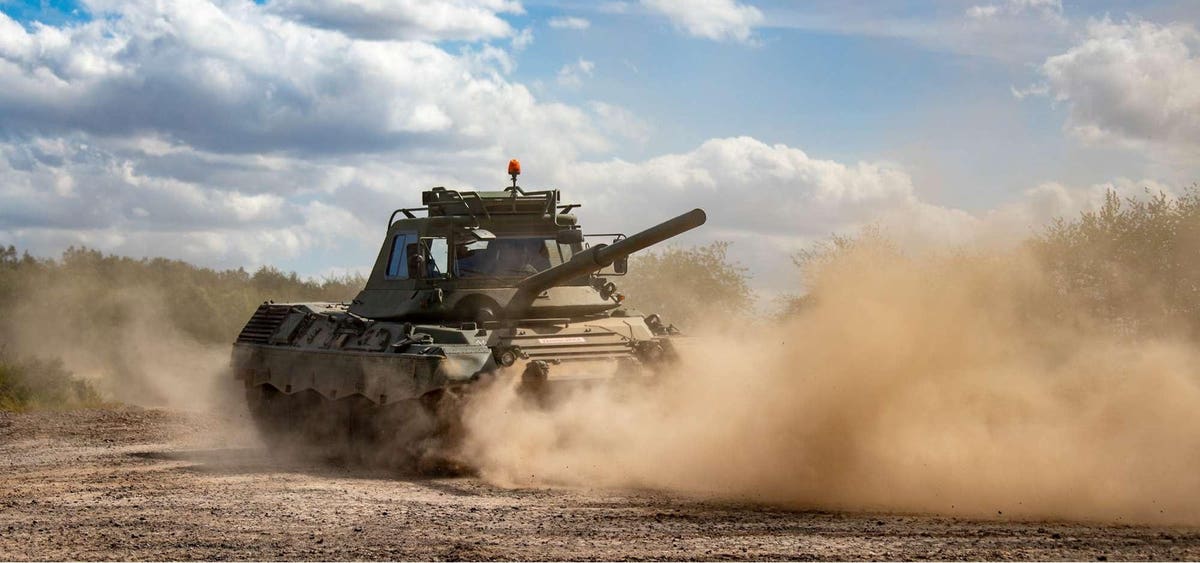The German-made Leopard 1A5 is on track to be, by far, the most numerous Western-made tank in Ukrainian service. For German trainers, that means a lot of hard work.
Berlin has authorized the export of up to 178 of the 40-ton, four-person tanks. Around 135 are coming from German and Danish stocks. The balance is former Belgian army Leopard 1A5BEs with unique fire-controls.
To put into context how important the 1980s-vintage tank will be to the Ukrainian war effort, Kyiv’s foreign allies between them have pledged just 85 heavier German-made Leopard 2s, 31 ex-American M-1A1s and 14 Challenger 2s from the United Kingdom.
In other words, the 178 Leopard 1A5s will outnumber, by a 48-tank margin, all other Western tank types in Ukrainian service, combined.
To be fair, Ukraine has gotten from its allies around 400 Soviet-designed T-72s. But some Ukrainians who have trained on the Leopard 1 expressed a preference for the German vehicle. “The Leopard 1A5 is much more maneuverable than our T-72,” one Ukrainian trainee told a German army reporter.
The trainee might change his mind in the heat of battle. Where a Leopard 1A5 has a maximum of just 70 millimeters of armor, a T-72’s armor maxes out at nearly 500 millimeters. The Ukrainian custom of wrapping tanks in layers of explosive reactive armor can mitigate, but not eliminate, the Leopard 1A5’s greatest flaw: its light protection.
In the Leopard 1’s favor, it has an accurate 105-millimeter main gun, the same EMES fire-controls as the heavier Leopard 2 and excellent day-night optics. As the Danish army discovered when it deployed Leopard 1s to the former Yugoslavia in 1994, the tank is like a sniper—and shoots accurately even at night.
The first Leopard 1A5s already have arrived in Ukraine, possibly equipping the new 44th Mechanized Brigade. The 44th might be just the start of a comprehensive reequipment effort: 178 tanks is enough to equip five brigades with a battalion each of tanks.
The brigades will have to figure out ways of using their Leopard 1s that leverage the vehicles’ strengths and mitigates their weaknesses. That doctrine could blend NATO training with Ukrainian experience.
The tankers’ two-week training course takes place at a German army base in Saxony-Anhalt. The German army retired its last Leopard 1s in 2003, but it still operates engineering vehicles that share the Leopard 1’s chassis and subsystems. German instructors were able to spin up a training program for Ukrainian tankers that borrows heavily from the training for German army engineers.
So far, 6,000 Ukrainians have rotated through the German army’s tank course and other military training programs. Another 4,000 are scheduled to pass through in the next four months. The ramp-up in training speaks to the size of Kyiv’s future Leopard 1 fleet.
Read the full article here





